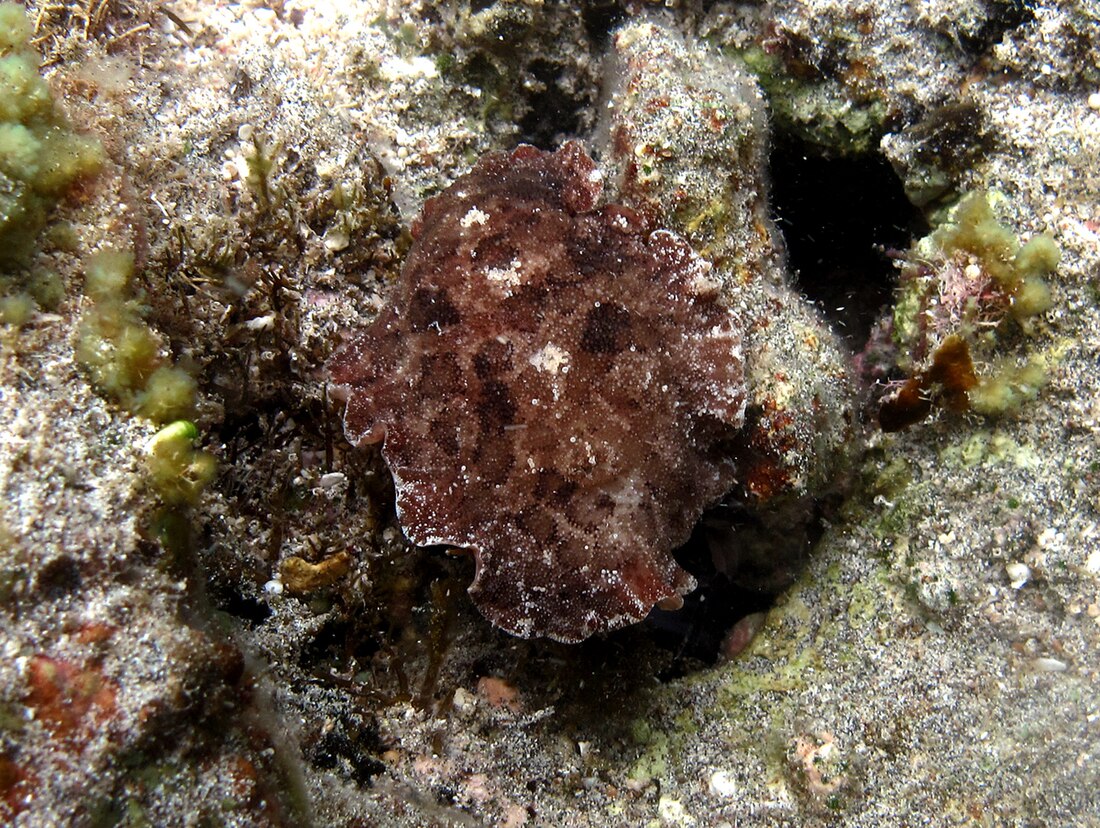Top Qs
Timeline
Chat
Perspective
Tayuva lilacina
Species of gastropod From Wikipedia, the free encyclopedia
Remove ads
Tayuva lilacina is a species of sea slug, a dorid nudibranch, shell-less marine gastropod mollusks in the family Discodorididae.[2] A number of species descriptions are considered to be synonyms.[4]
Remove ads
Distribution
This species was described from Honolulu, Oahu, Sandwich Islands. It has been reported widely in the Indo-Central Pacific and from the Pacific coast of Mexico and the Canary Islands. This wide distribution suggests that it is probably a species complex, but it has been considered to be an invasive species.[5]
Description
The maximum recorded body length is 50 mm[6] or up to 120 mm.[citation needed]
Ecology
Minimum recorded depth is 0.5 m.[6] Maximum recorded depth is 63 m.[6]
Tayuva lilacina feeds on Haliclona caerulea according to the in situ observations on the Pacific coast of Mexico.[7] It is probably highly specialized on this sponge.[7]
References
Further reading
External links
Wikiwand - on
Seamless Wikipedia browsing. On steroids.
Remove ads

